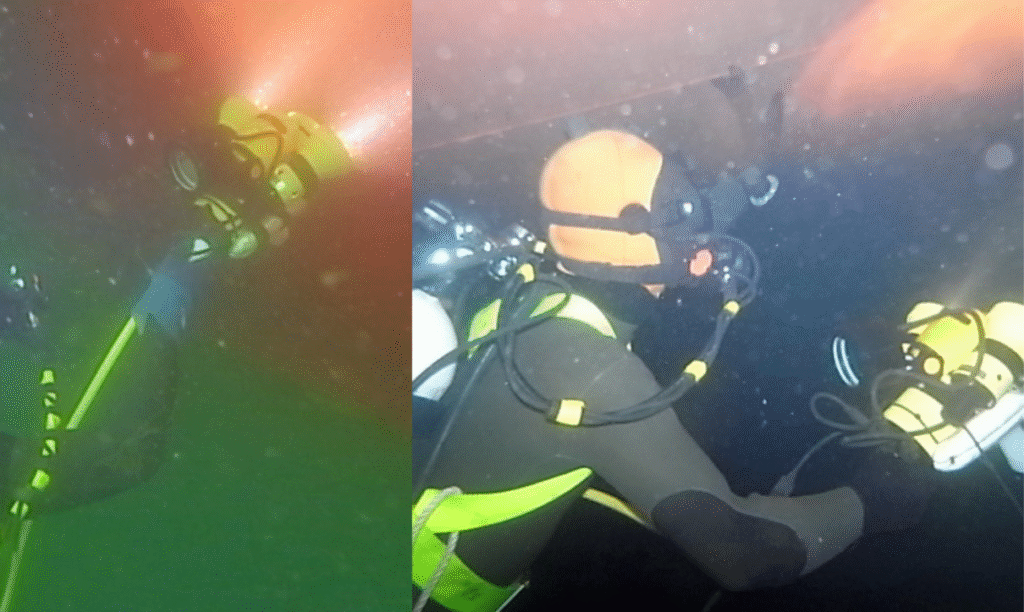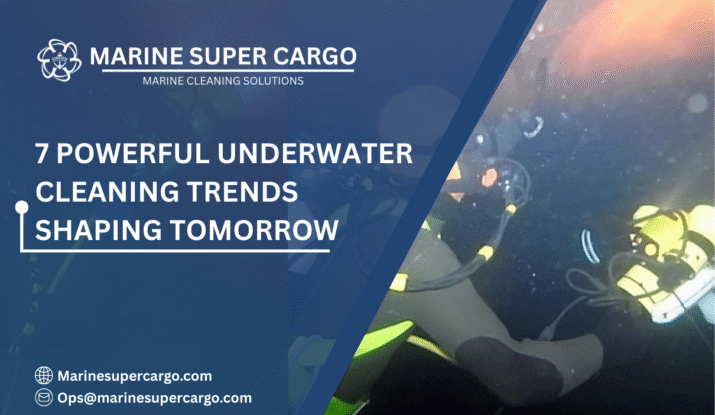The future of maritime maintenance is evolving far beyond the simple removal of barnacles. A new wave of underwater cleaning trends is transforming ship management with smart robots, AI-powered cleaning systems, and eco-friendly technologies that combine precision with sustainability.
These innovations deliver far more than clean hulls—they offer measurable savings, optimized performance, and stronger compliance with international regulations. By adopting automated and sustainable cleaning methods, shipowners, operators, and managers can cut fuel costs, reduce emissions, and protect marine ecosystems while keeping vessels in peak condition.
This revolution in underwater hull care empowers fleets to operate leaner, greener, and more profitably, ensuring long-term competitiveness in a highly regulated and environmentally conscious maritime industry.
Underwater Cleaning Trends: The Big Picture
The underwater cleaning industry is entering a period of rapid growth as shipping and offshore sectors seek smarter ways to cut costs and comply with tightening environmental regulations. Market value is projected to rise from $2 billion in 2025 to $3.5 billion by 2033, reflecting a steady CAGR of 7–7.4%.
This surge is driven by the need to enhance fuel efficiency, reduce emissions, and extend vessel and offshore asset lifespans. Innovations span the entire spectrum of ship management, from advanced hull cleaning and inspection systems to eco-friendly anti-fouling coatings and robotic repair solutions.
These trends highlight how underwater cleaning is becoming a cornerstone of sustainable, profitable, and regulation-ready maritime operations worldwide. Learn more
Driving Forces Behind Underwater Cleaning Trends
- Maritime Expansion: Over 90,000 commercial vessels now demand regular hull maintenance to curb biofouling and emissions.
- Stricter Environmental Rules: IMO and regional authorities enforce tough CO₂, invasive species, and pollutant standards, driving demand for fast, effective cleaning.
- Tech Breakthroughs: From autonomous underwater vehicles (AUVs) to AI-powered robots, companies are investing in smarter, safer cleaning solutions.
- Cost and Efficiency: Clean hulls can reduce fuel usage by up to 40%, boosting profitability and ensuring smoother operations.

Key Underwater Cleaning Trends You Need to Know
We’re moving far beyond manual brushing. Today’s Underwater Cleaning Trends spotlight:
- Robotic Cleaning Systems: Autonomous or remotely-operated robots can clean a ship’s hull 30% faster and safer than divers, often during cargo handling or berthing.
- AI & Data Analytics: Smart robots map hull surfaces in real time, optimize cleaning paths, and help managers schedule work for minimal downtime.
- Eco-friendly Innovations: Cavitation lasers and ultrasound systems remove marine growth without harming coatings or the environment—22% Mediterranean market share since 2026.
- Integrated Service Packages: Leading providers now bundle underwater cleaning, inspection, repairs, and coating as one stop, reducing ship downtime and increasing asset life.
Technical Jargon Explained
- AUV (Autonomous Underwater Vehicle): A self-steering robot used for hull cleaning and inspection.
- ROV (Remotely Operated Vehicle): An Underwater drone controlled by an operator, used for cleaning.
- Cavitation Laser: A high-frequency cleaning tool that uses bubbles to blast away barnacles and algae.
- Anti-fouling Coating: Special paints that slow or prevent marine growth on hulls, reducing cleaning frequency.
✅ 4 Things to Check for Safety at Sea pic.twitter.com/dAxhJQ2i6U
— Marine Super Cargo (@Marinsupercargo) September 14, 2025
Regional Market Trends
The Asia-Pacific region is emerging as the global leader in underwater cleaning innovation, setting the pace for the rest of the maritime industry. Countries like China, Japan, and South Korea are heavily investing in fleets of robotic hull cleaners, AI-driven inspection drones, and automated maintenance platforms.
This push is backed by rapid industrial expansion, massive investments in smart port infrastructure, and increasingly stringent environmental mandates aimed at cutting emissions and curbing biofouling-related risks.
A notable development in the region is the accelerated adoption of ultrasound and laser-based cleaning systems, which provide precision cleaning while reducing hull coating damage and minimizing ecological impact. These methods are now influencing global best practices, as shipowners worldwide look to Asia for cutting-edge solutions.
With government incentives, shipbuilding dominance, and advanced technology ecosystems, the Asia-Pacific region is poised to remain at the forefront of the underwater cleaning market’s growth trajectory. Also read about underwater hull cleaning in Cochin.
The Role of Compliance in Underwater Cleaning Trends
Compliance is the anchor for every Underwater Cleaning Trend. Regulations from IMO and MARPOL now require regular hull inspection and cleaning—not just for fuel efficiency but also for preventing invasive species transfer. Operators are increasingly tracking cleaning cycles, proving compliance through digital logbooks, and opting for green technologies to satisfy both local and global standards.
Future Innovations Within Underwater Cleaning Trends
Expect the extraordinary in the years ahead:
- Next-gen Robotic Systems: AI-powered, self-navigating robots can adapt to vessel design and hull condition, even in deep-sea rigs.
- Real-time 3D Mapping & Monitoring: Advanced sensors ensure thorough cleaning while providing compliance proof to port authorities.
- Modular Attachments: Operators can switch out scrubbing brushes for ultrasonic heads or anti-corrosion tools, tackling multiple maintenance needs in one pass.
- Fleet-wide Service Integration: Large operators increasingly deploy smart robots across their global fleets, enhancing uniformity and cost controls.
Addressing Cost-Saving and Sustainability Goals
Underwater Cleaning Trends put cost-savings front and center. With rising oil prices, clean hulls mean real dollar savings—up to 8% less CO2 emissions and 10% lower fuel spend for fleets using robotic cleaning and advanced coatings. Additionally, eco-friendly tech reduces operational risks and secures licenses for environmentally sensitive ports.

Overcoming Challenges in Underwater Cleaning Trends
There are hurdles: high upfront robotic investment, operational logistics during bad weather, and the need for skilled technicians. However, as more companies enter the space and service packages become comprehensive, barriers are dropping—especially for smaller fleet operators in emerging markets.
Conclusion
Underwater Cleaning Trends are reshaping maritime management as we know it, empowering ship owners, operators, and managers with powerful, sustainable, and compliance-driven solutions. Next-gen robots, smart data analytics, and environment-first innovations deliver fuel savings, regulatory peace of mind, and faster global trade.
Make CleanShip.co your trusted partner to ride these waves of innovation—and transform your underwater asset management.


